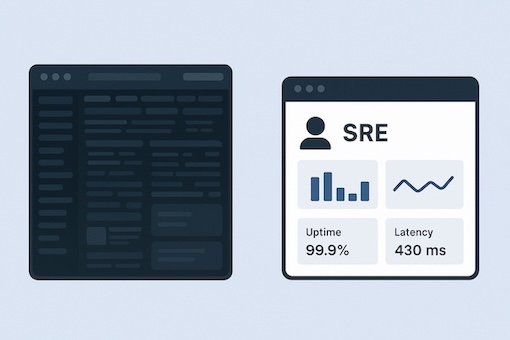Latest blog posts
DevOps resources tips and best practices
Our latest guest, Lawrence Jones, Engineer at incident.io, shares how he has driven engineering efforts through different stages of growth and complexity.

By leaning into platform engineering best practices and taking time to learn your team’s needs, you can improve your developer velocity and build strong products faster, regardless of your growth stage. Our latest guest, Lawrence Jones, Engineer at incident.io, shares how he has driven engineering efforts through different stages of growth and complexity.
Join us as we discuss:
Thriving in early-stage startups, Lawrence has had the experience of hypergrowth more than once. First, he worked with GoCardless, joining the company when they had approximately 35 people. In the span of a few years, the company grew to 750 by the time Lawrence left.
This experience sparked Lawrence’s interest in high-growth startups. When he entered his current position at incident.io, he was one of three members. Now, the organization employs around 30 people and continues to proliferate.
When asked about the earliest stages, Lawrence shares that the trio worked out of a room in an old fire station. But rather than assigning specific roles, they took on quite the collaborative approach.
“There was no demarcation between who was directing the product direction,” he says. “Everyone was in it to get the company into the best place.”
Instead, the company had a really close relationship with its customers. In fact, incident.io has Slack channels directly with its customers. So rather than speaking with a customer service member, clients spoke directly to the engineers who built the products they were struggling with. This direct line of communication resulted in something that Incident.io is very proud of — lightening fast product development.
“In the beginning, you are very dialed into everything that's going on in the company,” Lawrence says. “You constantly talk about how you will evolve the product.”
While a high-touch environment can be great for quick turnaround, great customer relationships and empathy building for engineers, it’s not always conducive to high growth. If your business chooses to take this close, open approach, it will be vital to home in on the source of customer needs and pain points
“It's your job to interpret the solution rather than building exactly what the customer says they need,” Lawrence says. “Digging deeper is essential if you want to build an intuition around building a good product.”
It’s also important to step back, admit when things aren’t going exactly as planned, and brainstorm how to get back on track.
When GoCardless shifted focus to creating a catalog, it took several tries and approaches and, ultimately, a broader look at the entire picture.
“If you ever find yourself with a sprawling mess of infrastructure, and you want to really tighten up and ease the pain between the developers and the people trying to manage it, take it in the background, define where everything is and map out the database,” says Lawrence.
Understanding incidents and how they develop or respond to initiatives can be instrumental in understanding exactly where your business and products are going and how they need to change. Unfortunately, most businesses know that incidents happen but have a very vague understanding of the effectiveness of response initiatives.
“At incident.io, we have a huge web of information that gives us a holistic picture of how your organization is responding,” Lawrence says. “We can estimate for all the users in all the incidents how much work has actually gone into them.”
With tag filtering, you can better understand how your organization has responded to an incident and what the response results have been. Then, you can split up the existing workload by teams to have a clearer understanding of progression and evolution over time.
In the end, your business is shaped by the decisions you make regarding the data you gather, analyze and understand, whether that data relates to incidents or something else entirely.
“It's like Conway's Law — eventually, your code will reflect your organizational structure,” Lawrence says. “It’s like that intensified with a social network effect of what you get with incidents. When the chips are down, who is working with who and how much?”
To learn more about Lawrence, hear his insights, personal experiences and more, check out his blog.
Want to learn more about scaling through hypergrowth, building a great product and utilizing incident data to streamline operations? Listen to the latest episode of Level-Up on Spotify, Apple Music or wherever you find your podcasts.

Kenneth (Ken) Rose is the CTO and Co-Founder of OpsLevel. Ken has spent over 15 years scaling engineering teams as an early engineer at PagerDuty and Shopify. Having in-the-trenches experience has allowed Ken a unique perspective on how some of the best teams are built and scaled and lends this viewpoint to building products for OpsLevel, a service ownership platform built to turn chaos into consistency for engineering leaders.
Conversations with technical leaders delivered right to your inbox.
DevOps resources tips and best practices
.png)
.png)

